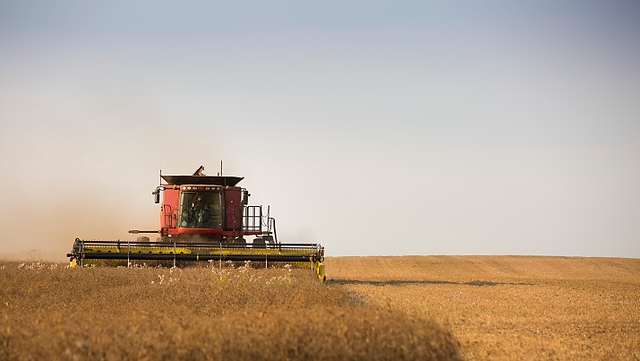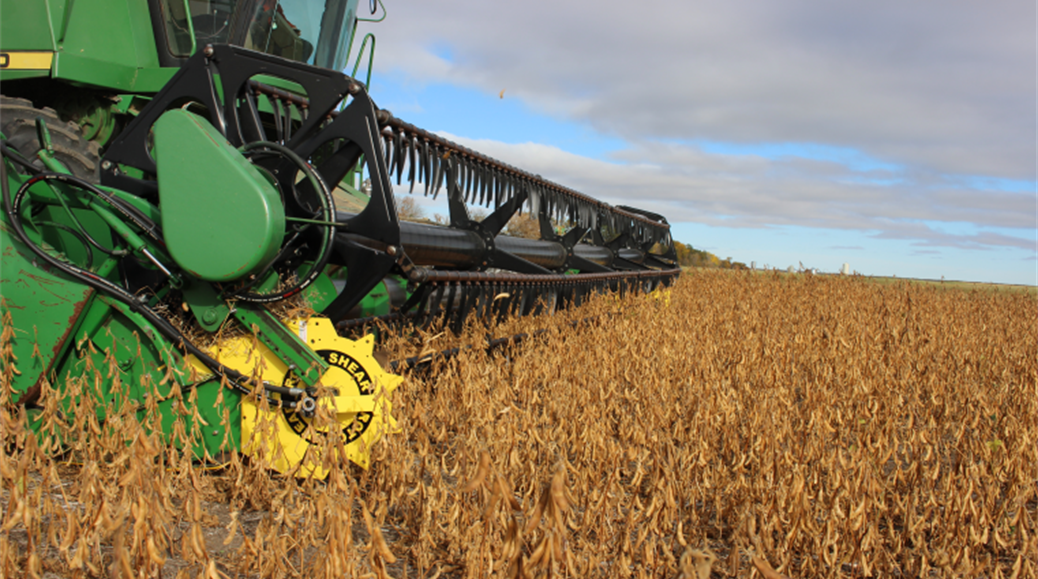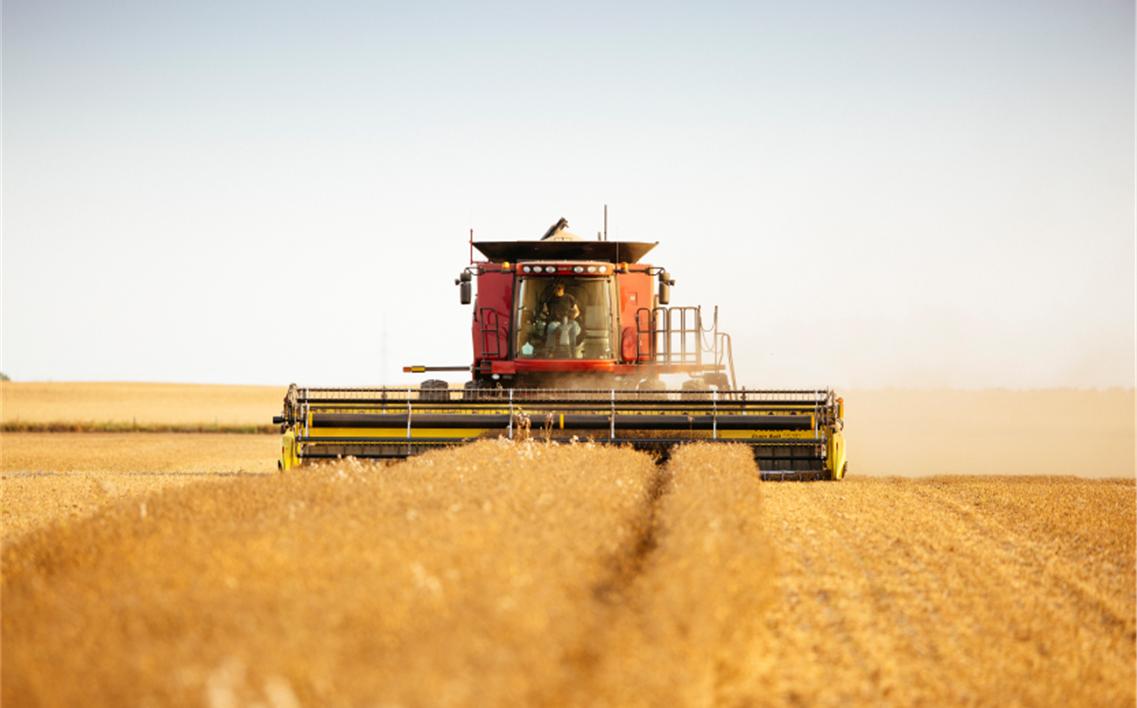By Delaney Seiferling
September 2019
With so much disparity in growing conditions across the province this year, it is tough to draw general conclusions about the state of pulse crops heading into harvest.
One thing that has been constant, is unpredictable weather and crop variability says Saskatchewan Pulse Growers’ Agronomy Manager Sherrilyn Phelps.
“It was another year of extremes, from dry to wet in short periods of time, and lots of wind and hail.”
In general, it looks like provincial production levels will be average, says Saskatchewan Ministry of Agriculture’s Special Crops Specialist Dale Risula.
“It could be a decent year for pulses but the end results will depend on the precipitation and timing for pulses throughout province,” he says.
Phelps agrees that pulses are in decent shape and yields could be above average in some areas. Chickpeas and lentils could have close to average yields, while peas could be slightly above average. For faba beans and soybeans it will depend on the weather going into harvest.
Chickpeas
Chickpeas had issues in the areas south of Highway 1, along the United States (U.S.) border, and into the northern U.S.
The problems started with the early dry conditions causing uncertainty around fungicide and weed control, Phelps says.
“Last year there was no disease pressure so people were hoping they might be lucky again this year, but that changed once rains started in late June.”
The moisture and hail, plus a number of other factors such as herbicide residues and improper tank spray mixtures may have combined to cause problems, Risula says.
Aschochya was rampant, particularly affecting the chickpea variety CDC Orion. Disease, in combination with the other stresses, caused unusual symptoms in the crops and blighting, Phelps says.
In mid- to late-July agronomists and growers noticed chickpea leaflets were dying off quickly and not all symptoms seemed to be associated with Aschochyta blight. No commonalities were identified between affected fields other than the CDC Orion fields seemed to be worse than other varieties. Samples were taken for analysis but results are not yet in, Phelps says.
“There was something else happening in these crops that we have not identified, other than the possibility of a combination of stresses causing the scale to tip.”
Herbicide injury from residual products, tank carry-over/drift, root issues such as root rot or soil compaction, environmental impacts from hail and/or heavy winds, and rain have all been suspected.
Many of the crops did recover but this led to further problems.
“Once you get re-growth there is potential for late maturity,” Phelps says. “We have to wait and see if growers are able to get those crops off and what the yield and quality impacts may be.”
Chickpea prices depend on seed size and the delayed maturity and stresses may impact this characteristic.
Peas
The outlook for peas is positive at this point, Risula says.
“I have seen a lot of pea fields that look good and have flowered up nicely. We could have some good yields on peas and good quality.”
Peas (as well as chickpeas and lentils) had dry conditions early in the season which meant weed pressures were very low or non-existent at the right timing for in-crop weed control. After the June rains volunteer canola and other weeds emerged and many growers were faced with weeds poking through the canopies as harvest approached. The later weed pressure meant harvest management decisions had to be made and growers will have to manage the possibility of more weed seeds in the fields for next years crop, Phelps commented.
There was also root rot present in some pea (and lentil) crops where the disease has been a problem before.
“It is surprising how fields can look good under dry conditions and then after a significant rain event can go completely backwards as root rot – like Aphanomyces – rears its ugly head,” Phelps says.
“The importance of rotations and lengthening rotations between crops such as peas and lentils cannot be stressed enough.”
Growers who have dealt with Aphanomyces or suspect Aphanomyces in their fields should be considering a six, and preferably eight-year rotation with peas and lentils, Phelps says.
“It is not what growers like to hear but to maintain the ability to grow these crops and target decent yields, this may be the new reality in the affected fields.”
Peas remain one of the better looking pulse crops this year. Phelps has heard preliminary reports of 40-50 bushel yields in the south of the province but thinks that number might be higher as harvest progresses north into the higher moisture areas where peas are typically grown.
One concern that remains is bleaching, which can be caused by wet and dry cycles with periods of sun in the midst of a delayed harvest. Bleaching affects green pea crops, affecting their colour consistency, downgrading their value.
Lentils
Lentils had a lot of variability across the province this year, Risula says.
“A lot of the crops did not get started when they should have and growth was quite sporadic, so there is lots of patchiness and unevenness in the fields.”
This could mean some challenges when it comes time to swath or desiccate, Risula says, as one lentil field might have a lot of unevenness with maturity.
On top of that, the weather was warmer leading into harvest and a lot of pulse crops began to turn quickly.
“Some fields were corner to corner yellow in early August,” Risula says.
“So it will likely be an earlier harvest than usual for lentils.”
He also says that in some areas where crops have been rated as poor, the lentil crops could be shorter than usual, which makes combining problematic.
“Unless it is really flat, stone-free land, it could be difficult to get those short lentils.”
Dry Beans
The crop is holding steady, Phelps says, but is delayed in maturity.
“It has not been an ideal bean year, as they typically like heat and this summer had cooler nights. It will be interesting to see where yields end up.”
Soybeans
Soybeans have been struggling this year with the lack of heat and cooler nights, Phelps says, but a lot can still change in the next couple of weeks.
“They can still put in a lot of yield in August but it will depend on the weather going into harvest.”
Harvest

In terms of harvest considerations, Phelps reminds farmers it is important to handle pulses gently.
“They can be easily damaged by excessive handling and quality is important to reach top grades.”
Another harvest consideration is being mindful of the harvest products you are using and their associated risks, Risula says.
“Pulse farmers should be careful to use harvest weed control products, like glyphosate or any other pre-harvest product, at the proper timing.”
Generally, most crops are considered mature when they reach 30% seed moisture, he says, but that number may vary slightly for different crops. It is critical to make sure that farmers observe proper crop stage and desiccation timing or else it could drastically affect their marketing opportunities.
“Spraying before 30% will likely cause an increase in residues within the grain, so farmers really have to spray at the correct time.”
Check with your marketer or buyer before using any products to ensure they are suited for the intended markets.
For more information on Maximum Residue Limit guidelines, visit www.keepingitclean.ca/pulses.
Phelps reminds farmers to employ best practices when it comes to storing and drying crops.
“If you have heavy patches of weeds in fields, keep an eye on them so they do not end up in samples. Make sure to push some air through them and check for hot pockets where spoilage can occur. It is a good idea to pull some loads out of bins prior to long-term storage to help break up higher moisture spots.”
She also advises farmers to consider doing their own grading. The Canadian Grain Commissions offers a free, voluntary harvest sample program that provides farmers with grade, dockage, and quality results for their crops, and allows the industry to track overall quality for the year.


